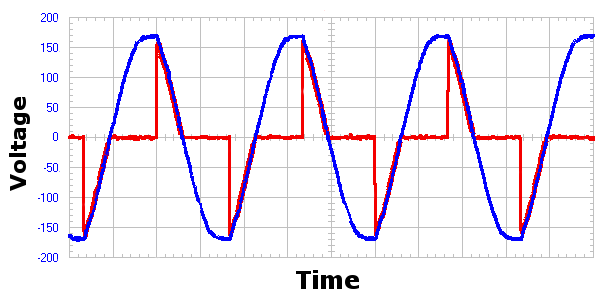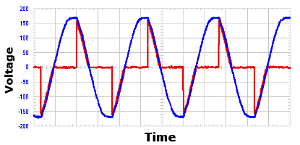I had a brief exchange with Dr. Jack Kruse on Twitter the other day. He made the claim that using incandescent lamps with dimmers is bad for your health. Well that certainly got my attention as I am a huge proponent of using dimmers. There are dimmers on most fixtures in my home and I recommend others do the same. Check out the conversation:
@DrJackKruse @CaloriesProper @milenahunt @bengreenfield Not incandescents. Light from hot filament- would need to cool->reheat for flicker
— Shawn Severinsen (@shawnseverinsen) November 17, 2015
@DrJackKruse @CaloriesProper @milenahunt @bengreenfield almost correct, power on/off=cooler filiment=less lumens Power cycles, lumens don't
— Shawn Severinsen (@shawnseverinsen) November 17, 2015
@DrJackKruse I'll check it out!
— Shawn Severinsen (@shawnseverinsen) November 17, 2015
His concern is that flicker will wreck havoc on your health. Now I’m no neurosurgeon (and I’ve no clue what “aQA 4 gate” is), but I do know a thing or two about lighting and electricity.
I know that flicker is a problem with LEDs. They can range from almost zero flick to crazy strobe disco flicker. The LED is binary. It goes full off or full on. Incandescents are linear. They get brighter and dimmer rather than full off and on. I did not think that incandescents would flicker enough to cause problems.
How modern dimmers work
Incandescent lamps work by running an electrical current through a tungsten filament. The filament gets super hot and radiates light. For lower light output you need the filament to be cooler. That’s what a dimmer does. It lets you adjust the heat (power) output of the lamp.
So how does a dimmer lower the power output of the filament? In AC voltage systems, voltage cycles from 0V to a positive peak then down to a negative peak and back to zero. In 120V systems, the cycle has a peak of 170 volts with the voltage going to zero twice in the cycle. There are 60 cycles a second in the US. So that’s 120 times a second that the voltage supply to a lamp hits zero!
A dimmer elongates the time that the sine wave is at zero volts. Jack is correct in that the AC sine wave is “chopped up”. There is an electronic gate with an adjustable time delay that closes when the voltage hits zero. When the dimmer all the way down, the delay is longer and when its at full brightness there is no delay. The longer the period of zero voltage, the cooler the filament will be.
The chart below shows four cycles of an AC voltage sine wave. The regular line voltage is in blue and the dimmed voltage in red.

The voltage on the red wave stays at zero for a longer period of time before jumping up to 170V then back down to zero. Notice that there is no ramping up. The voltage jumps from 0 to 170V before tapering down.
Where I was wrong
When a lamp is not dimmed the light cycles at 120 Hz. The light pulsates very slightly as the filament cools and reheats 120 times a second. A full power incandescent lamp has little flicker. As you begin to dim the light, you are reducing the frequency from 120 Hz down to 30 Hz or less. I thought that a filament would not cool and heat enough to produce any meaningful flicker but I was wrong. At Jack’s prompting, I have found that flicker in lighting can indeed be a problem! This is true even with incandecenst. I was also shocked to learn that some people are sensitive to light flicker at well over 120 Hz.
Health concerns
So far I haven’t found much. Light flicker is registered by the brain and then filtered out. This puts extra stress on the visual processing system. This can cause eye-strain, headache, and possibly triggering seizures in epileptics. Unfortunately, there doesn’t seems to be a whole lot of research beyond that. I did look into Alexander Wunsch who Dr. Kruse referenced in his tweet. He has a lot of great information on artificial light, unfortunately a much of it is in German. I haven’t yet found anything directly addressing the problem of light flicker.
What now?
I have a lot of research to do! Flicker is something that is not regulated at all and has no set industry standards. Incandescent lamps are at least fairly consistent with regards to flicker. LED flicker can be very problematic because it can vary from 100% to 0%. There are no labeling or reporting requirements from manufactures. I talked to a Philips sales rep and he told me there is no data what so ever on flicker.
My recommendation is to use brand-name incandescent lamps and brand-name (i.e. expensive) dimmers, and not to dim more that 50%. I will continue researching this topic and sharing my findings on this site.


